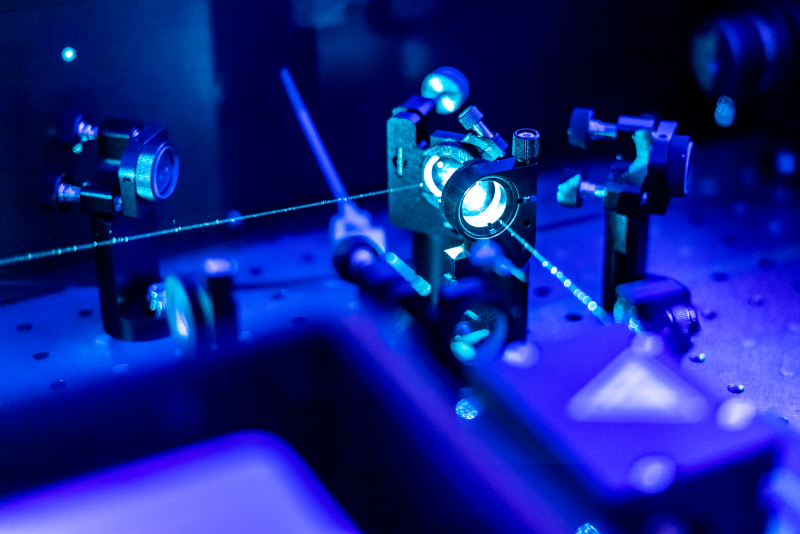Thanks to topological isolators, it was possible to combine 30 lasers into one laser with a higher power.
 VCSELs are the most popular type of laser. They can be found in smartphones, computer networks or medical devices. They emit light from quantum wells or dots located between mirrors. The pits and points are extremely small, their size is measured in fractions of a micrometer. This is an advantage, on the one hand, as it enables miniaturization and high-speed operation, and on the other hand, the size limits the power of the laser. After decades of work, a solution has now been developed to increase the performance of VCSELs so that they can also be used in areas where they could not previously be used.
VCSELs are the most popular type of laser. They can be found in smartphones, computer networks or medical devices. They emit light from quantum wells or dots located between mirrors. The pits and points are extremely small, their size is measured in fractions of a micrometer. This is an advantage, on the one hand, as it enables miniaturization and high-speed operation, and on the other hand, the size limits the power of the laser. After decades of work, a solution has now been developed to increase the performance of VCSELs so that they can also be used in areas where they could not previously be used.
For decades, researchers have tried to improve the performance of vertical cavity surface emitting lasers (VCSELs) by forcing them to work in groups. They wanted to combine multiple lasers into a single one with multiplied power. Unfortunately, minimal inaccuracies in the manufacturing process resulted in this Laser worked in small independent groups whose emissions were not synchronized with each other. It was therefore not possible to find one coherent laser beam to create.
Only now have researchers around Sebastian Klembt from the University of Würzburg and Mordechai Segev from the Israeli Technion Institute of Technology developed a method to force 30 VCSELs to work coherently. They did this by arranging the lasers so that the geometry of the whole coincided with what the scientists learned from their research topological isolators had learned.
Topological isolators are unusual materials. They are homogeneous, but inside they are insulators, while their surface is a conductor. Such materials were discovered a long time ago, but the history of their use in lasers is only 8 years old when Segev and researchers at the University of Rostock introduced the first photonic topological isolator. In this laser, the light moved along the edges of a two-dimensional matrix from Waveguides and was not disturbed by their bumps. A few years later, Segev and another group of coworkers showed that it was possible to have many such lasers work together. However, the system had significant limitations. The light circulated in the plane of the system that created it. This in turn meant that the performance of the system was limited by the size of the light emitting device. The researchers compare this to a power plant that only has one socket.
The new VSCEL topological array consists of two types of honeycomb matrices with nanoscale pillars on the tips. One type of matrix is a stretched matrix and the other is a compressed matrix. Scientists have created a special interface between these two. If the parameters are correct, a topological interface is created where light has to flow between the lasers. This continuous, topologically protected light flux means that the light from each laser has to reach all the other lasers in order to get a coherent beam, explains Segev. So the light circulates throughout the array, but is also emitted by the individual lasers that make up the array.
A low level of coupling in the plane is sufficient to force a number of individual emission sources to act as a single source, according to Science.